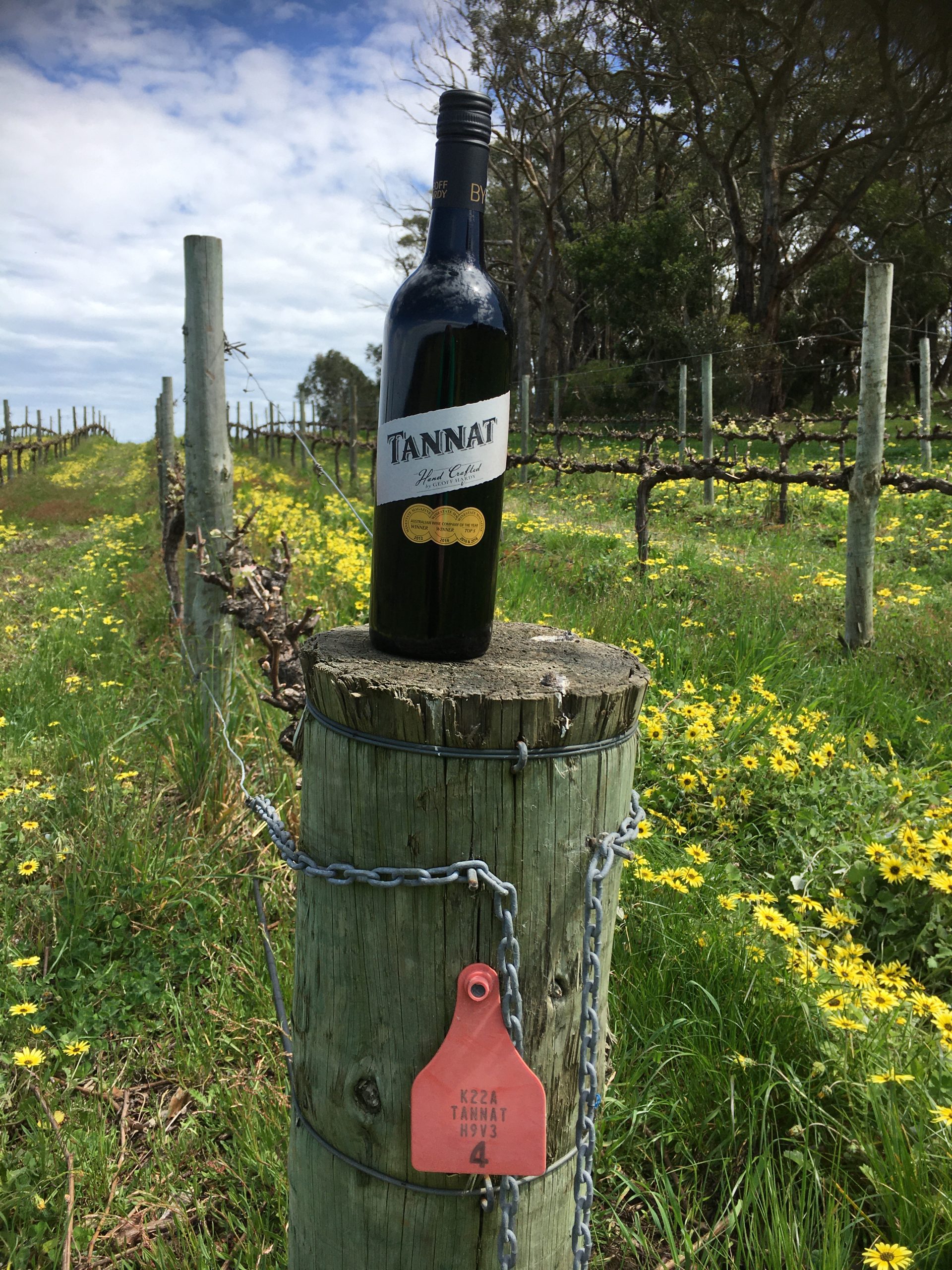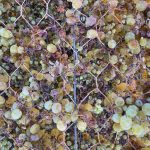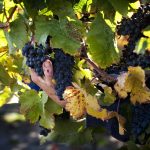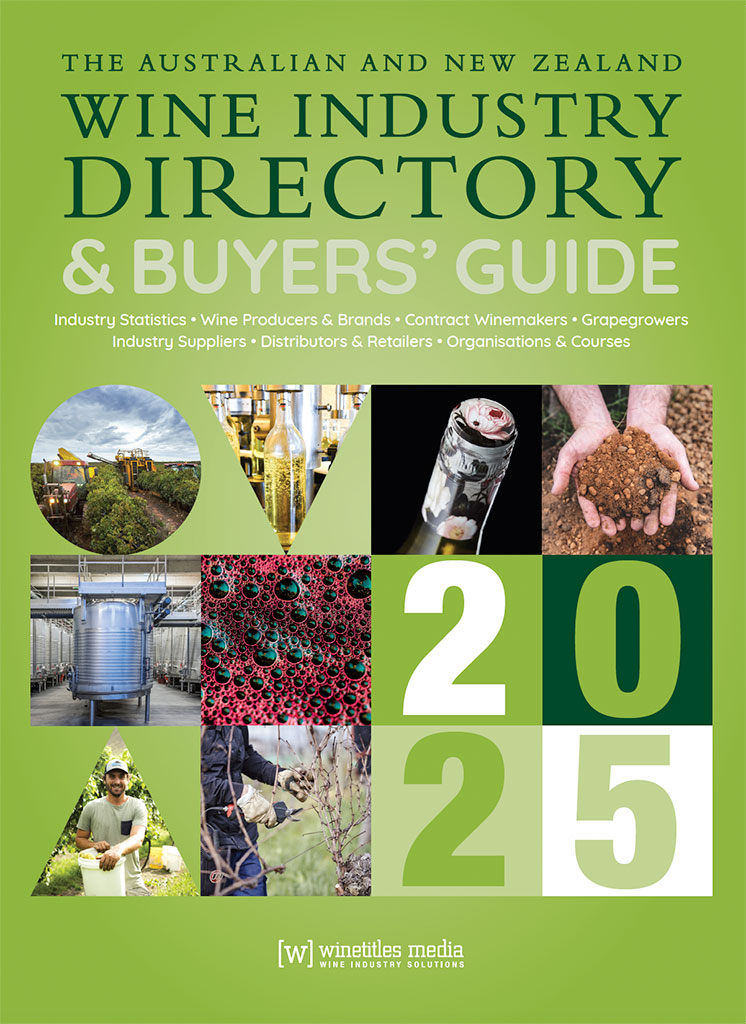Wines by Geoff Hardy Hand Crafted Tannat.
The beauty that can pack a beastly punch
This month, journalist Samuel Squire ventures his mind to the shores of Uruguay, where an emerging variety called Tannat has made a big name for itself thanks to its distinct characteristics. Mnemonic for ‘tannic’, much like Merlot is for ‘mellow’, Tannat is a grape variety that can be brash and beastly, or smooth and refined in the hands of knowledgeable winemakers. We find out how it got to Australia’s shores, and how it’s been performing in our market since its arrival.
Tannat is a red winegrape most closely associated to the Madiran winemaking region in the foothills of the Pyrenees Mountains in southwestern France. It has been growing in that region since the 1600s.
The French kings of the 17th and 18th centuries used to accept Madiran wines as payment for taxes. Madiran appellation laws at the time actually mandated that Tannat be blended with Cabernet Sauvignon or Cabernet Franc to mellow out its tannic and astringent nature.
In the late 19th century, Basque migrants took some Tannat vine cuttings over to South America, where it is now considered to be Uruguay’s national grape.
Known for its distinctive, tough skins and deep black flesh, Tannat is used as the principal ingredient in Madiran wines, where concentrated and traditionally tannic wines are made.
The climate of Uruguay was found to be very adaptable for Tannat, and now it has adapted so well, that the variety accounts for one third of the country’s total wine production. Surprisingly, Tannat is grown more in Uruguay than its original home of southwestern France.
As winemakers and viticulturists know, tannins come from the skins and the seeds of the grapes when crushed.
Tannat just so happens to have five seeds, while normal red winegrapes contain just two or three. These additional seeds create a higher concentration of polyphenols, procyanidins, flavenoids and resveratrol, which are the four main antioxidants found in red wine, and Tannat has been identified by leading researchers as having the highest concentration of these compounds.
Darby Higgs of Vinodiversity says Tannat has been attracting interest in Australia, where it seems destined to be used for red wines intended for extended ageing, or to lend its intense colour and astringency to dry red blends.
In Uruguay, Tannat wines are slightly lighter than those made in Australia through the use of more carbonic maceration and earlier skin removal.
Wine writer Jancis Robinson says Symphonia Fine Wines, a small family winery in Victoria’s cool-climate King Valley region, was moving to grow its own Tannat vines some 20 years ago and she says it was probably the first Australian winery to release a varietal Tannat wine.
Wines by Geoff Hardy winemaker Shane Harris has been working with Tannat for many years, and over that time has gained a familiarity with the variety.
Harris says he first encountered Tannat in 2006 whilst working in a vineyard in McLaren Vale.
“I struggle to find much on the actual arrival date of Tannat into Australia,” he said, “But I have been able to find out that it came into Australia through the Australian Vine Improvement Association in 1969”.
“As far as I know, that single clone is the source for all the material currently planted in Australia.
“The fruit has quite a striking appearance in the vineyard during vintage as there is so much colour accumulating that the stems and vines in the leaves are usually red towards the end of ripeness.”
It wasn’t until 2009 that Harris says he managed to get hold of some fruit and since then, he has been crafting varietal wines from Tannat on a regular basis.
“What I love about Tannat is its blue fruit spectrum. It often smells like blueberry pie in the press. It has a distinctly different fruit and spice character,” he said.
In the March/April 2015 issue of the Wine & Viticulture Journal, Harris said the key to Tannat’s success in Australia
stemmed from the variety’s newfound Uruguayan homeland.
“The beacon on the hill for this variety in Australia may not be its homeland of France. Rather, South America, where Tannat has found its way into the hearts and minds of the Uruguayan wine industry, where it now represents approximately a third of wine produced, may hold the key to success,” he told the WVJ.
Many different styles
While some producers of Tannat in Uruguay have used the variety as a rosé style, Harris says that he hasn’t yet seen it made as such, but adds the variety is so widely planted in its home turf that it has been experimented with and has been made into many different styles.
“Tannat, also known as Harriague in Uruguay, is made into many styles from fuller-bodied roses, Beaujolais-styled light and bright wines to more serious structured dry reds often blended with Pinot Noir and Merlot.
“The thread that ties these wines together is their elegance, softer tannins and dark berry fruits that are achieved by good site selection, picking at phenological ripeness, awareness of extraction during ferment and constant innovation.”
Although Harris says the winemaking for Tannat wines can change, or be adaptable to the fruit brought into the winery, its profile is truly unique to the variety.
He says Tannat is a very late ripening tannic variety, so seasonal variation and adapting to those changes in fruit composition year to year is important both in the vineyard and winery.
“Tannat has a huge amount of tannin, colour and flavour that is accessible to the winemaker during fermentation,” he said.
“Attention to rate of extraction, fermentation temperature and time on skins and pressing are all critical points as with all high tannin varieties.
“I personally try to bring the fruit in as cool as possible (not particularly hard in the Adelaide Hills late into vintage) then inoculate with a cultured yeast strain at a lower rate to slow the start of ferment.”
Harris says that Tannat varietal wines are “distinctively different” and don’t really have a counterpart or similar style to compare to.
“The four primary antioxidant components found in all wines – polyphenols, procyanidins, flavonoids and resveratrol – are all found in their greatest concentration in Tannat, so you really have everything available to the winemaker in excess (assuming ripeness has been achieved), then balance, complexity and individual house styles emerge from the actions of the winemaker,” he said.
As an emerging variety in the Australian market, Tannat does seem to be performing well. Harris says, domestically speaking, Tannat sells best when made available at a cellar door for a tasting.
Although, he adds that Wines by Geoff Hardy has exported small quantities of its Tannat into several markets, normally when agents develop an appreciation for the varietal wine. However, he says the business’ small plantings of the variety do limit its availability.
Wines by Geoff Hardy has now had roughly 20 years’ experience with Tannat and the business’ initial straight varietal releases were under the Pertaringa label, now owned by Geoff Hardy’s daughter Bec, but the business has since moved them over to its Hand Crafted range along with the other alternative varieties it produces.
“Today, our sole source of Tannat comes from the 1.4ha we have planted in the K1 vineyard at Kuitpo,” Harris said.
“The best barrels produced each vintage end up as a straight varietal while the balance makes its way into blends, particularly Cabernet and Merlot blends.”
.
This post was originally featured in the November 2021 issue of the Grapegrower & Winemaker.
To read more articles like this, subscribe online here.





















